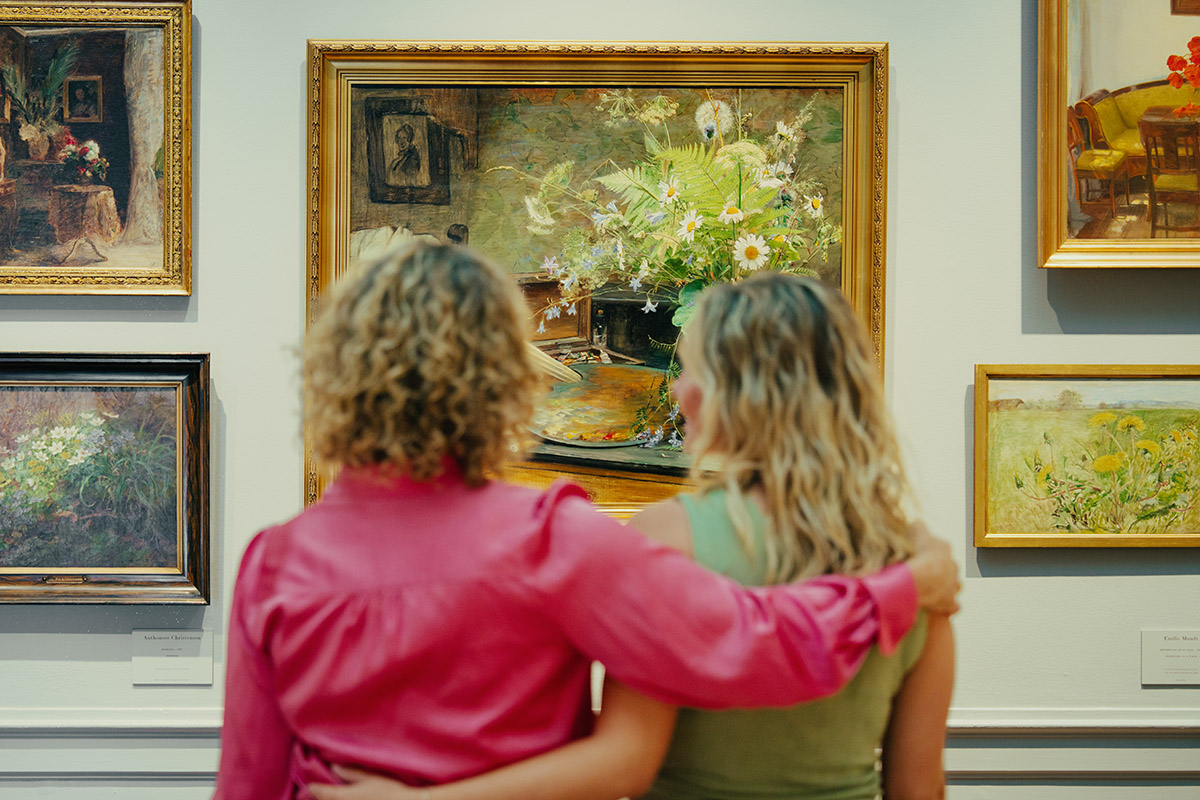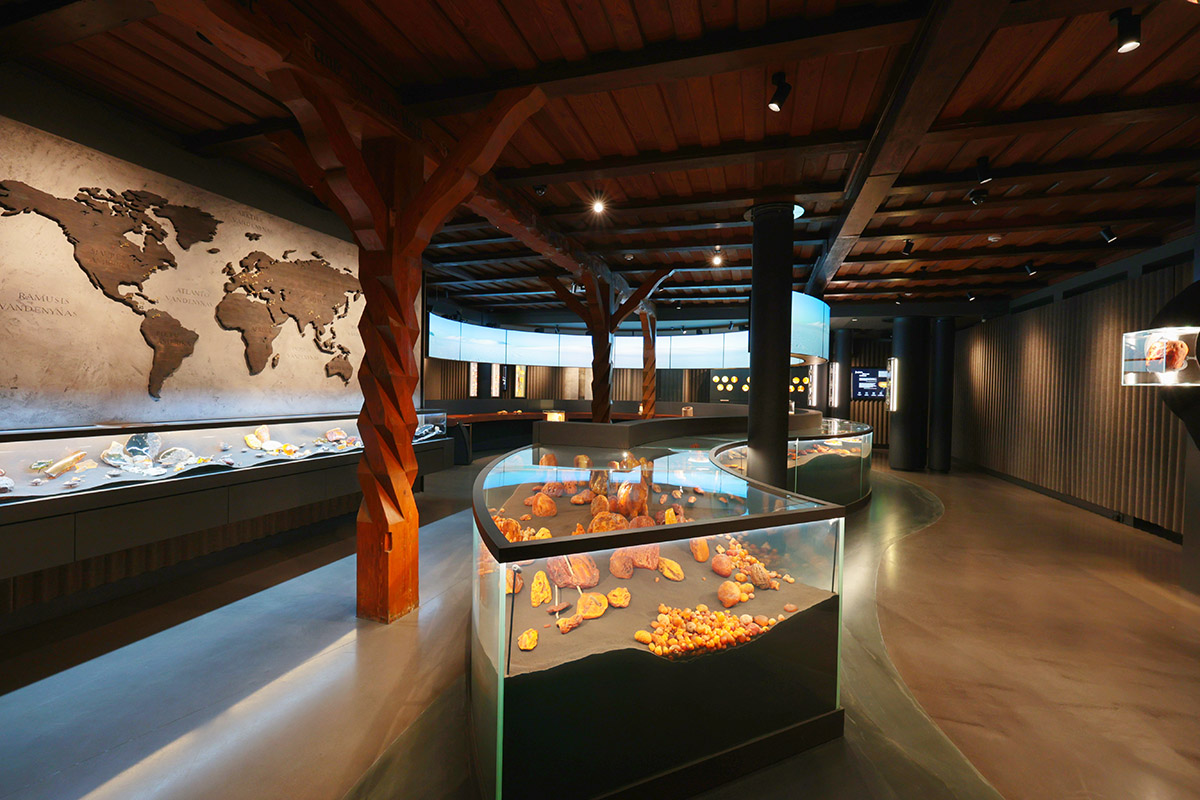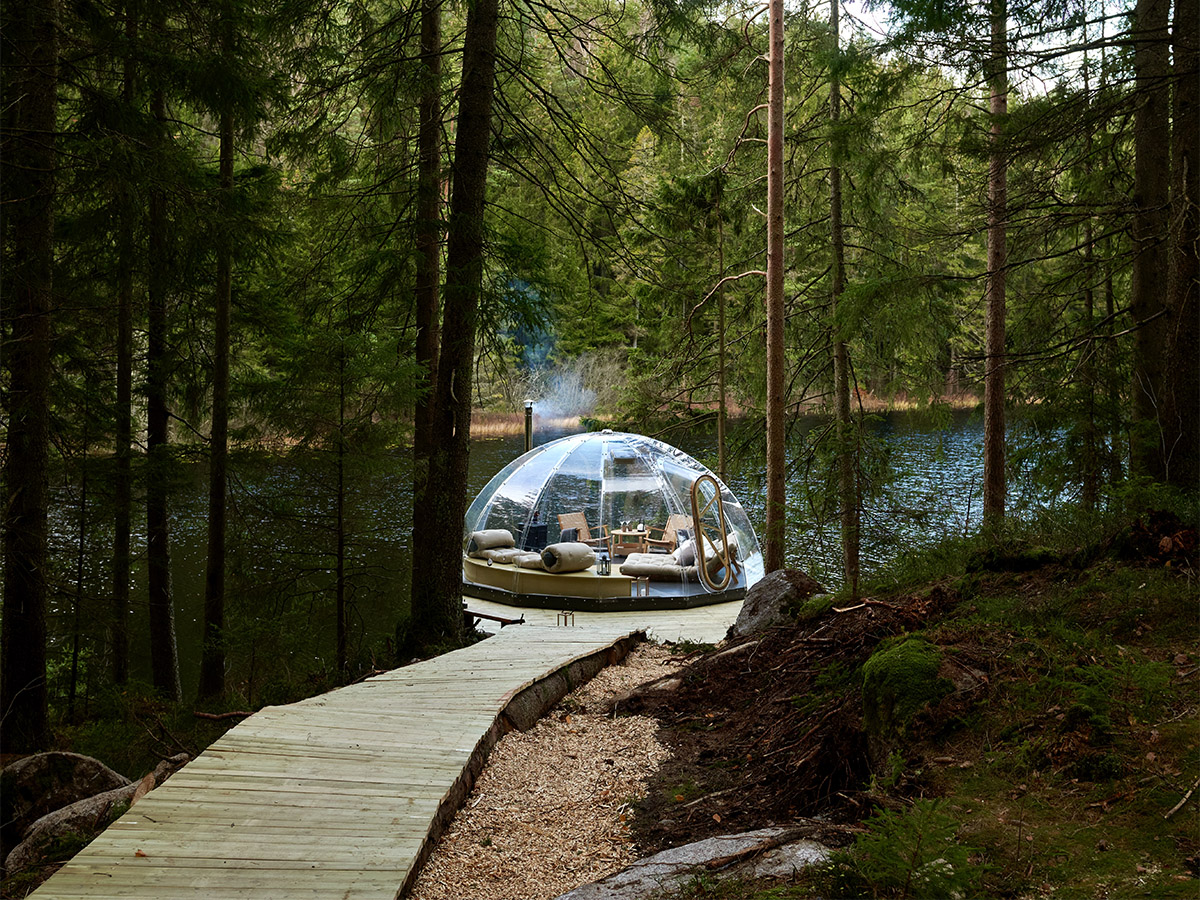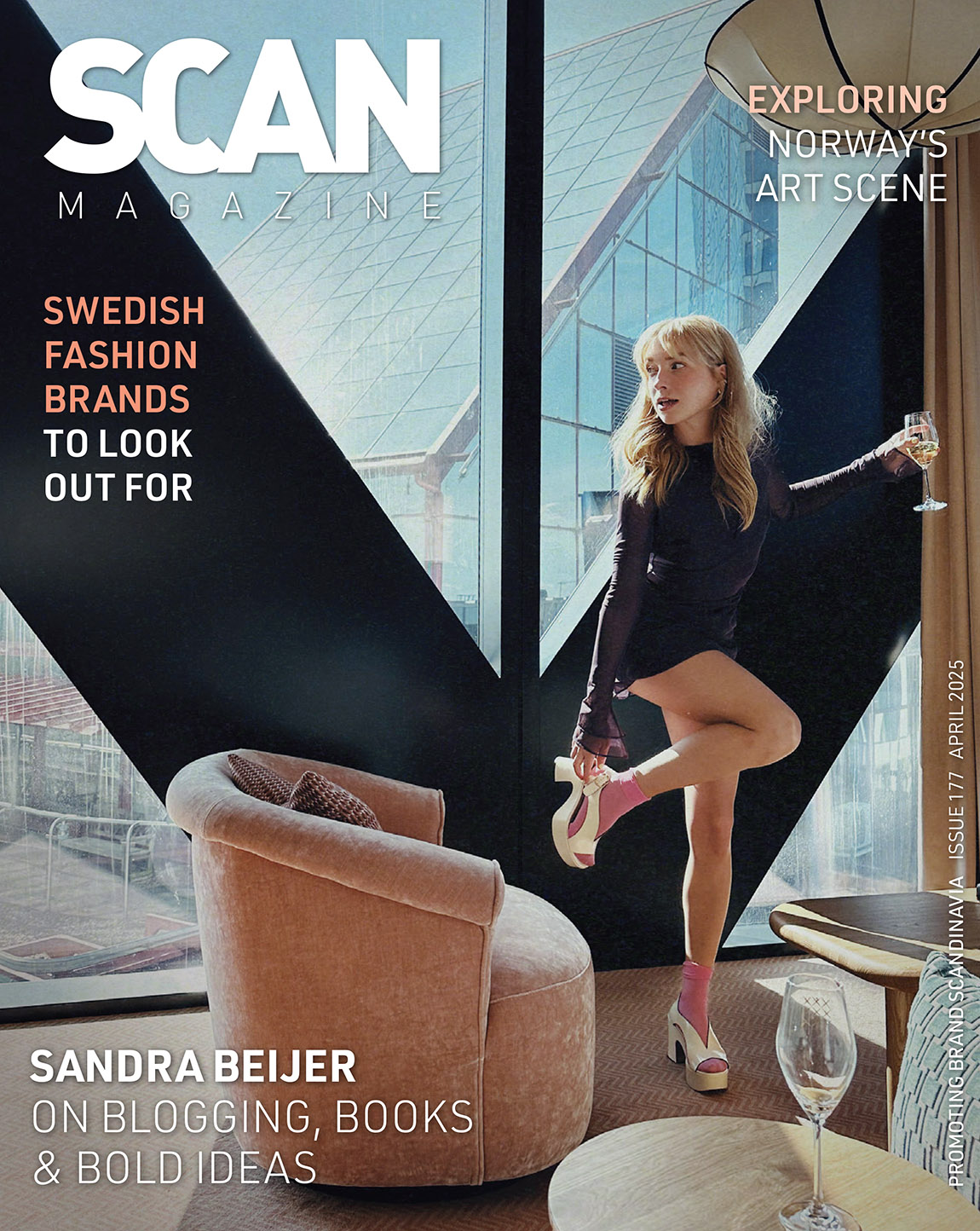Karl Erik Harr Museet: Out of the ordinary
By Eva-Kristin U. Pedersen
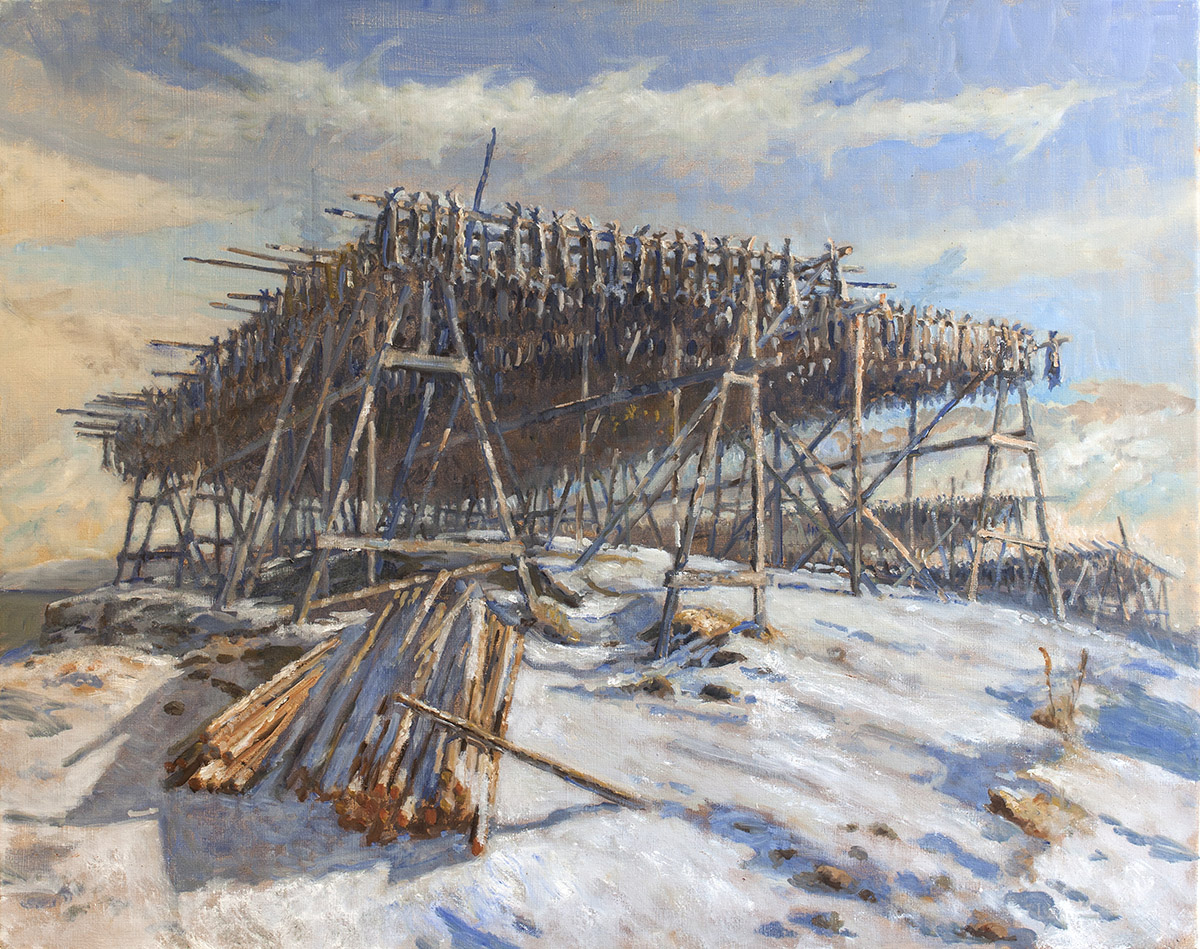
Fiskehjell by Karl Erik Harr. A painting from the Lofoten islands. Photo: Christian Baumann Christensen
The Karl Erik Harr museum at Kjerringøy in Nordland breaks all the rules that usually govern museums. That’s why it is becoming an attraction quite out of the ordinary.
Museums are often large, imposing buildings, strategically placed to attract as many visitors as possible. Moreover, museums more often than not are a tribute to groups of or singular artists that are no longer with us. In defiance of all these unwritten rules of museums, the Norwegian painter Karl Erik Harr, a few years back, decided to open a museum of his own work. Moreover, he wanted the museum to be placed on the remote island of Kjerringøy in the north of Norway.

Left: Fra Bjørnøya. This painting is a part of Bodø 2024. Photo: Christian Baumann Christensen. Right: A brand new webshop. Photo: Harrmuseet
“I wanted the paintings to be where they were created”, Harr explains. While he was born in Harstad, Harr moved to Kjerringøy in 1978 and his atelier is located only a short distance from where the museum is.
“I believe there is a value in showing paintings in a picturesque location, much like enjoying the Skagen-painters at Skagen in Denmark, or the great European impressionists on the European continent. Besides, Kjerringøy is actually only half an hour by car from Bodø, the second largest city in Northern Norway,” the artist smiles.
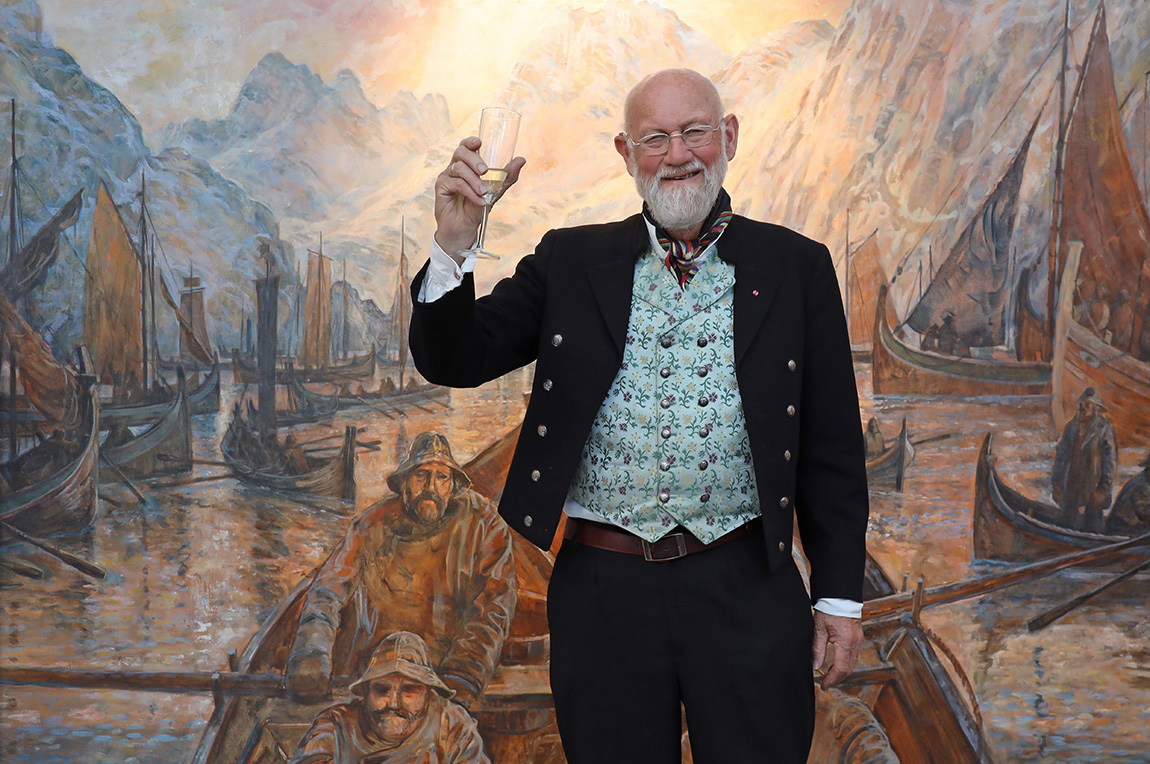
Karl Erik Harr in the traditional Nordlandsbunad when the museum was opened. Photo: Christian Baumann Christensen
Karl Erik Harr is a renowned painter, and the illustrator of many Knut Hamsun’s books as well as the works of the baroque Norwegian poet Peter Dass – perhaps the first artist to praise the northernmost parts of Norway – and recognised across the world for his art. Harr’s work spans several decades and includes not only paintings but also several books – many of which are available for sale in the museum.
“I wanted the museum to encompass all of my work, and the writing has always accompanied the painting”, Harr stresses.
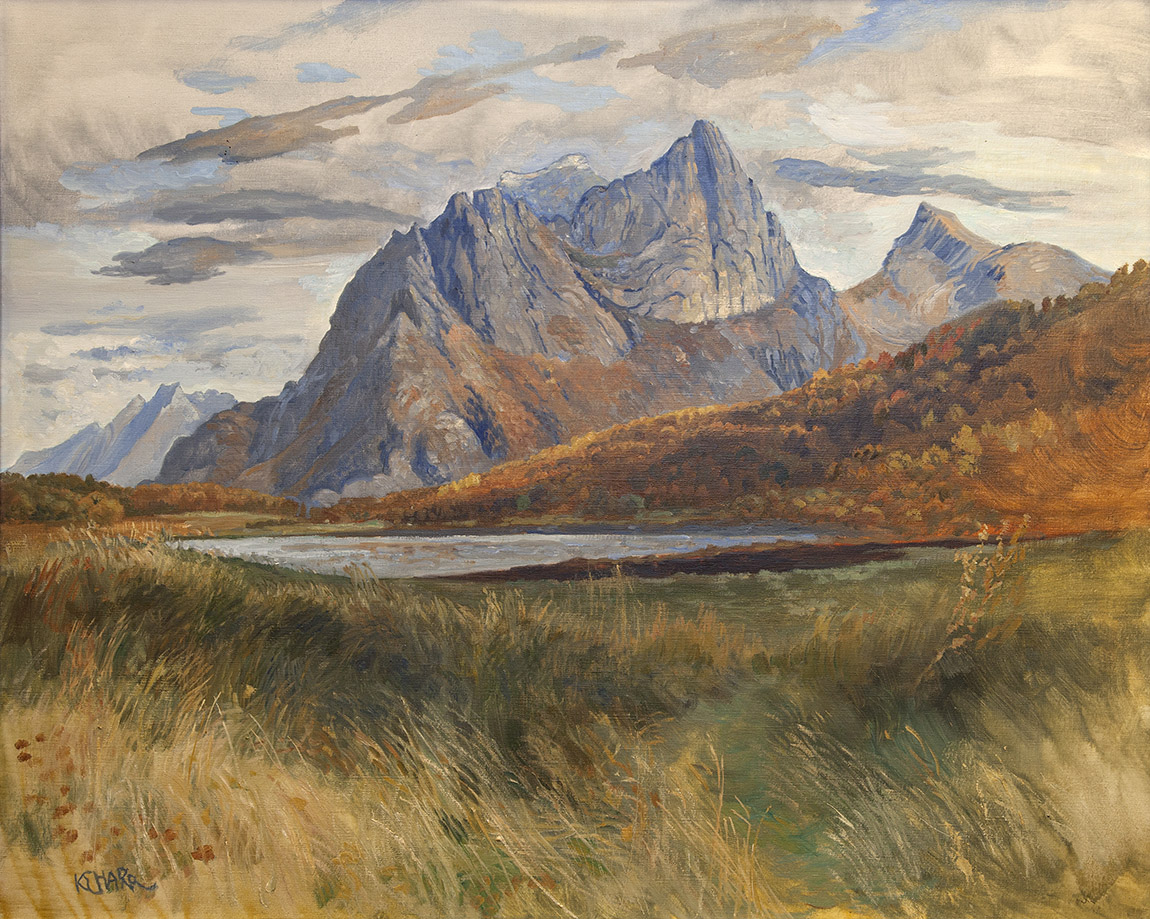
Strandåtind in September. This mountain is a dear object of Harr’s. Photo: Christian Baumann Christensen
A profound love for northern Norway
Be it literature or visual art, Karl Erik Harr’s work is kept together by a very evident red thread, which is the love for and dedication to northern Norway. Because of his efforts to showcase this part of the country throughout the world, the Norwegian King has ordained Harr a Knight of the Order of St. Olav – the most prestigious recognition in Norway.
In recent years. Northern Norway has become a magnet for outdoor tourism, attracting visitors from around the globe eager to emerge themselves in the mesmerising nature in the far north by taking part in activities like whale safaris, hiking, skiing, dog sleighing and diving in arctic waters. Meanwhile, the art that northern Norway has inspired, more often than not gets transported away and exhibited elsewhere.
The Karl Erik Harr-museum at Kjerringøy aims to counterweigh that tendency. The art museum adds a different, artistic and intellectual dimension to the adventure that tourism in the north has become. And while Kjerringøy might seem a remote outpost to modern city dwellers, the island actually has a long history as a nexus between the far north and the continent. From 1700 onwards, the island was an important trading post for fish going south and foodstuff and other supplies going north. The buildings of the trading post are still visitable, and part of the Nordland Museum of Natural History.

Hav by Karl Erik Harr. Photo: Christian Baumann Christensen
Paintings of landscapes that no longer exist
While the museum’s main exhibition is permanent, this year, a part of it is dedicated to Karl Erik Harr’s contribution to Bodø 2024 (the Norwegian city will be the European capital of culture in 2024). The section includes a series of paintings Harr made during expeditions to the polar sea and to places such as Bjørnøya, Spitsbergen, Hopen and Greenland. Several of the landscapes he painted, no longer exist.
“The ice has melted because of climate change. I had no idea when I painted them, but it does add an extra dimension to these paintings,” the artist underlines.
Harr explains that he wants this exhibition to create awareness about what is happening to the Arctic areas. Most of the paintings were created on fishing vessels as he was travelling. Photographers and filmmakers might do, but very few people travel that far north to actually paint, making Harr’s work quite unique.
When asked how he feels when watching the paintings now, knowing what is happening to the landscapes that inspired them, Harr says that it makes him feel grief.
“It is a feeling of loss. I feel nostalgic about something that used to exist but that is no more. I hope to have captured something that we need to take care of – what’s left of it. Fortunately, that process has started, but I’d like for my paintings to be a reminder of how important it is,” Harr explains.
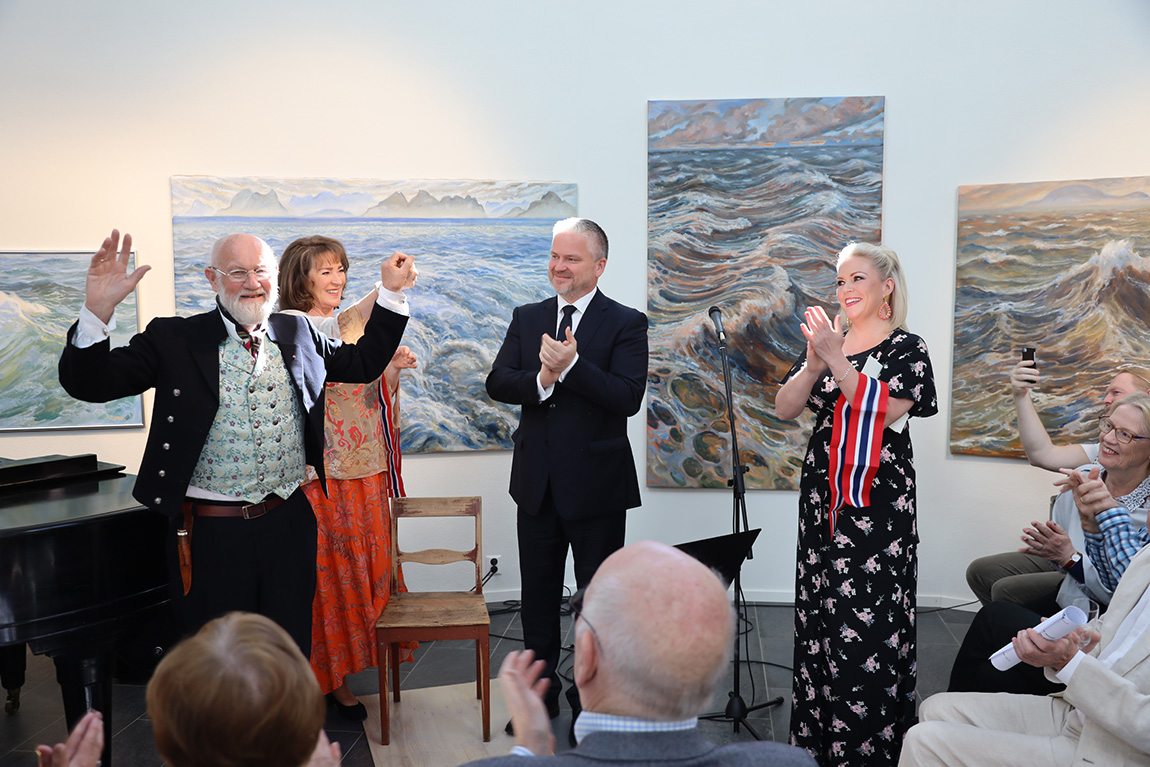
Karl Erik Harr with his wife and guests at the opening. Photo: Christian Baumann Christensen
Group visits throughout the year
Since its opening in 2019, the Karl Erik Harr-museum has been a valued addition to the local community at Kjerringøy. While it is, at times, a challenge to attract more visitors, especially given the relatively short tourist season at that latitude, the museum also caters for groups. Many businesses and organisations choose Northern Norway for courses, team-building exercises and the like, and a visit to the Harr Museum adds a thoughtful, artistic touch to their trip. Full-time opening hours are only observed in the summer, but groups are welcome throughout the year, and the museum collaborates with a nearby hotel to organise the visit.
The staff at the Harr Museum is happy to provide guided tours and explanations and can also organise for the visit to include receptions and servings of local food. Concerts with local artists are also very popular – the museum provides a perfect setting for musical events. During the summer, to cater for foreign visitors, in addition to English and Norwegian, guides are available in French and Italian too.
Moreover, while the Harr Museum is a museum in all senses and much of the exhibition is permanent, visitors also have the chance to purchase original works and reproductions, as well as many of Karl Erik Harr’s books in the museum store (and in the newly added webstite).
A token to take home, perhaps, from what must be one of the most memorable little museums in the world.
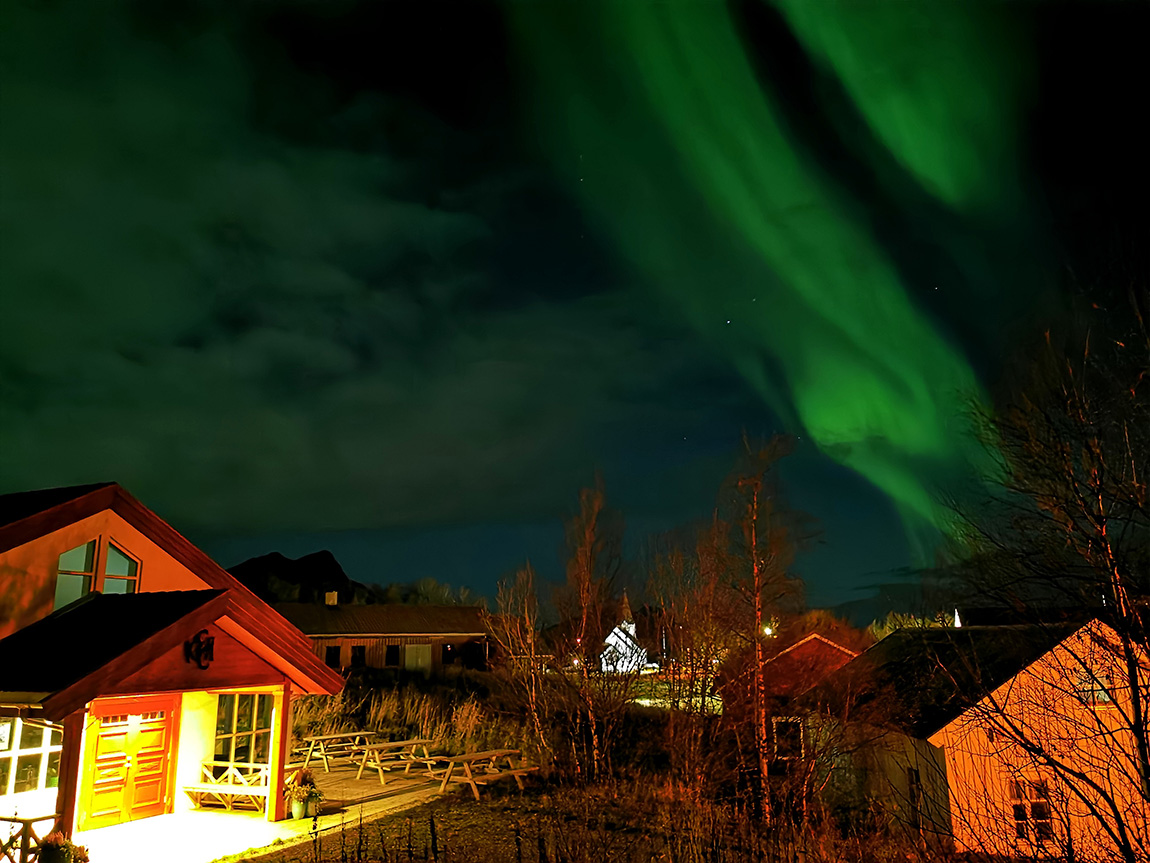
The museum in the midst of spectacular northern lights. Photo: Harrmuseet
Subscribe to Our Newsletter
Receive our monthly newsletter by email


